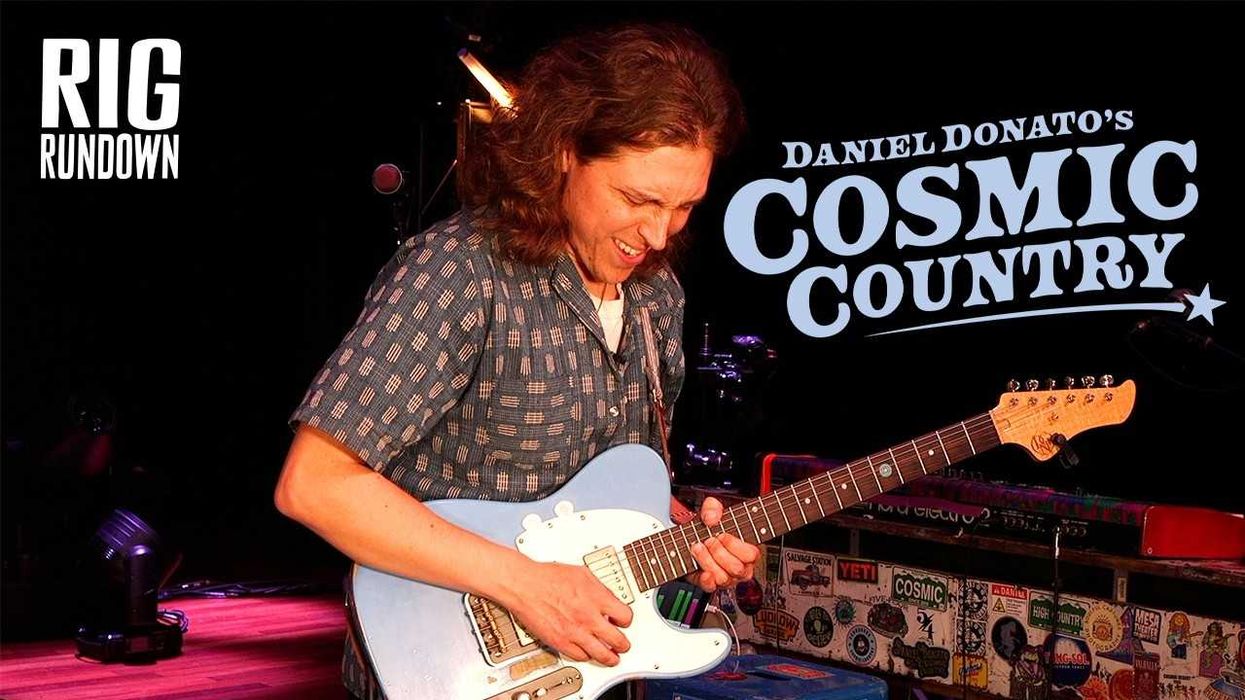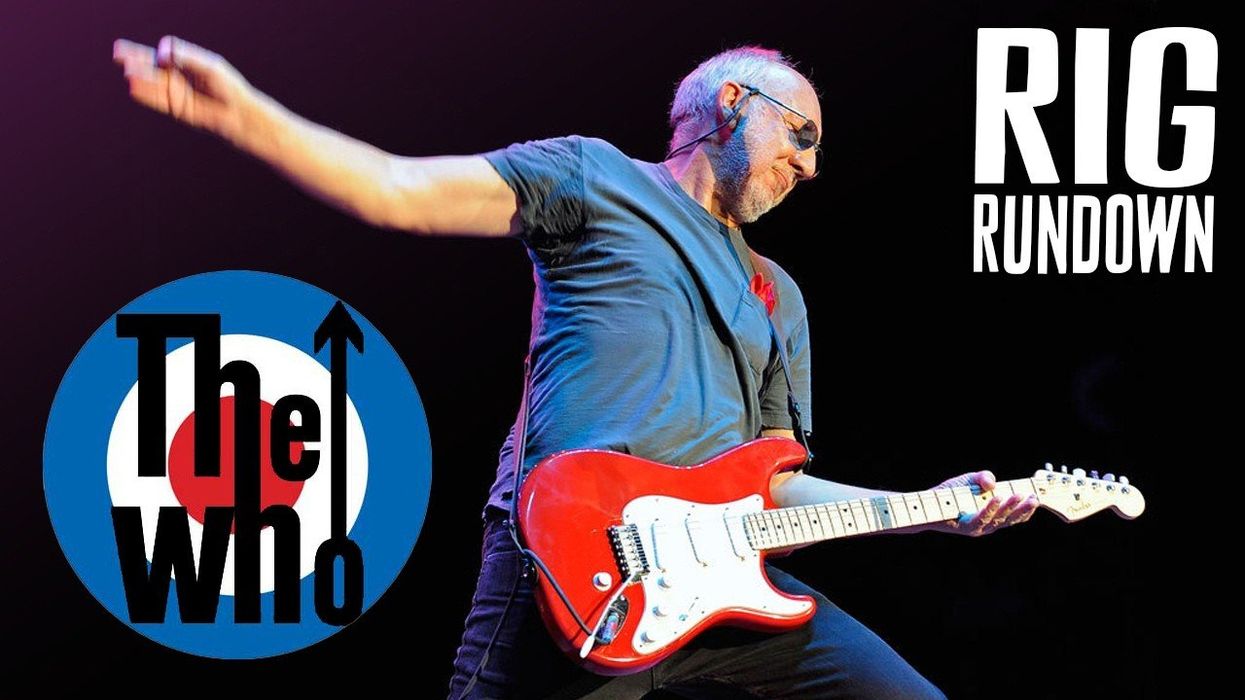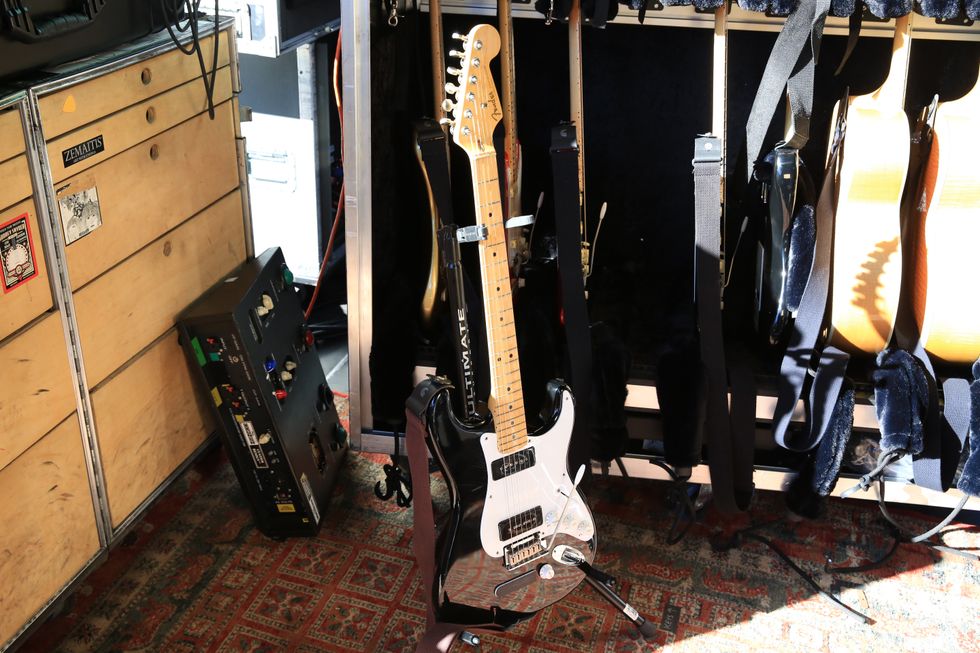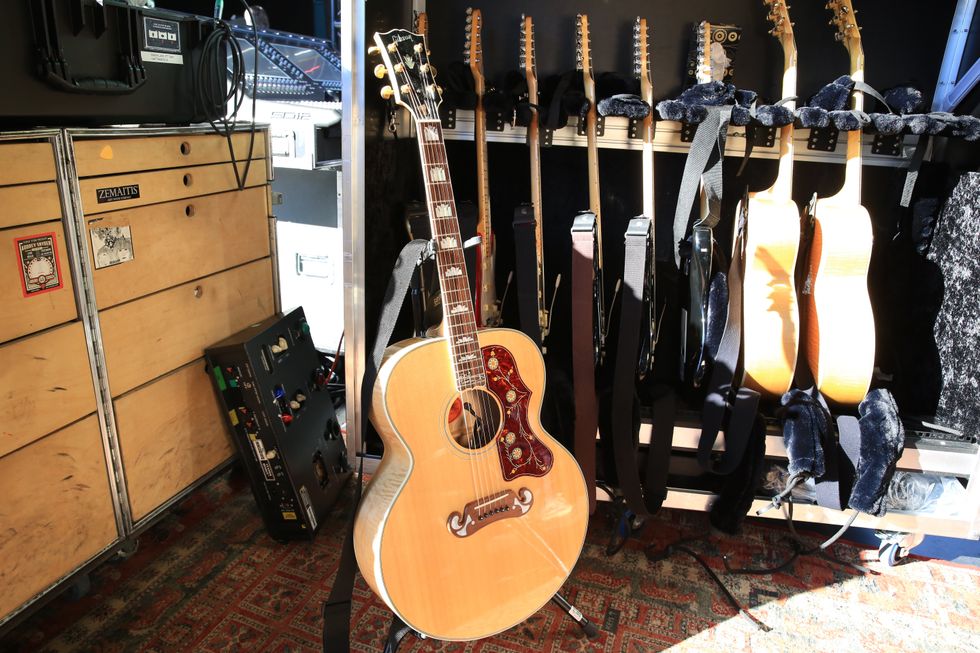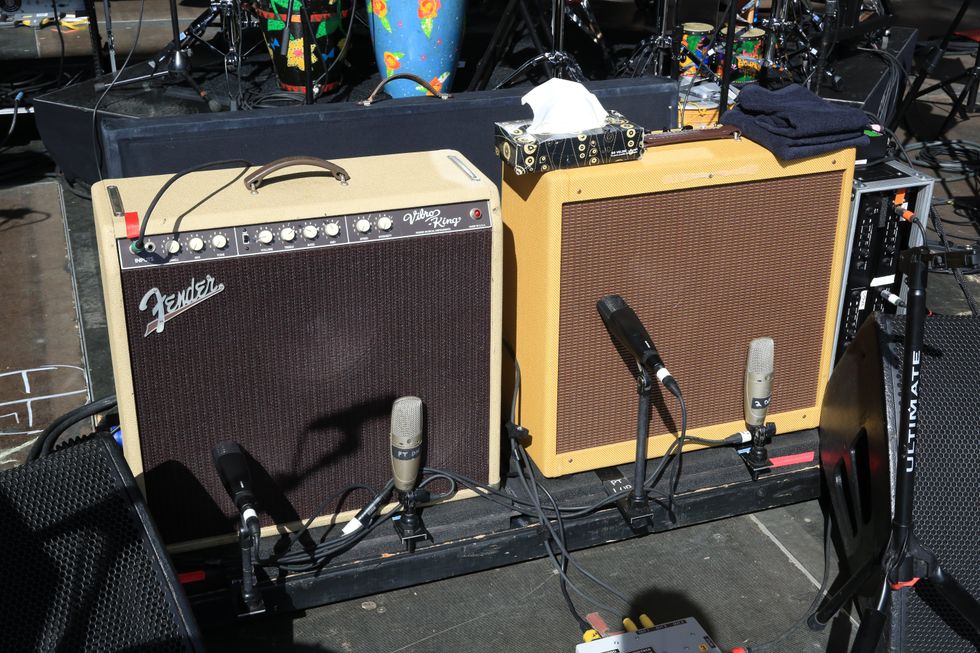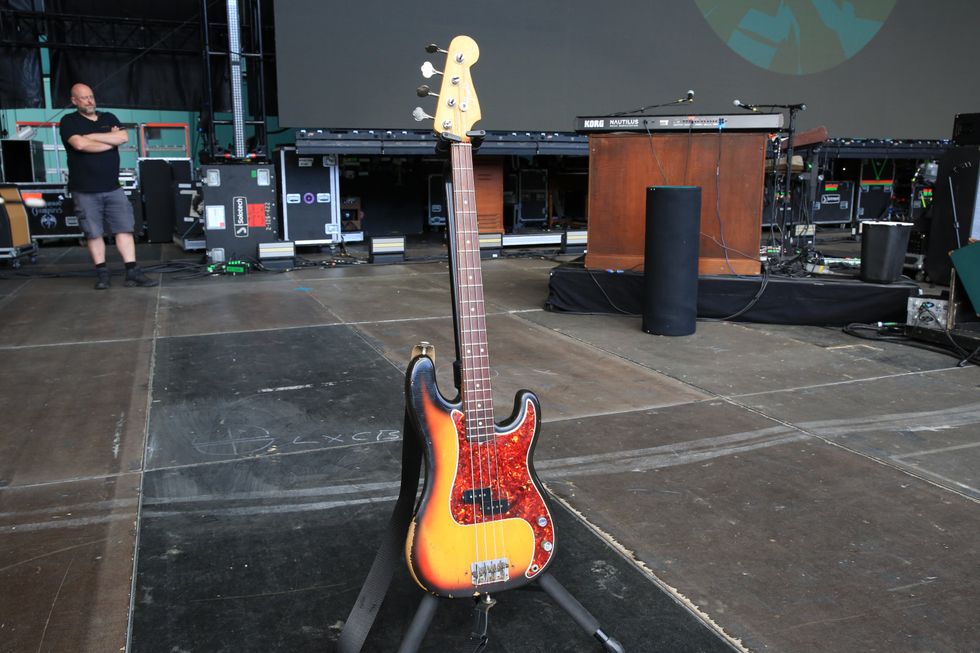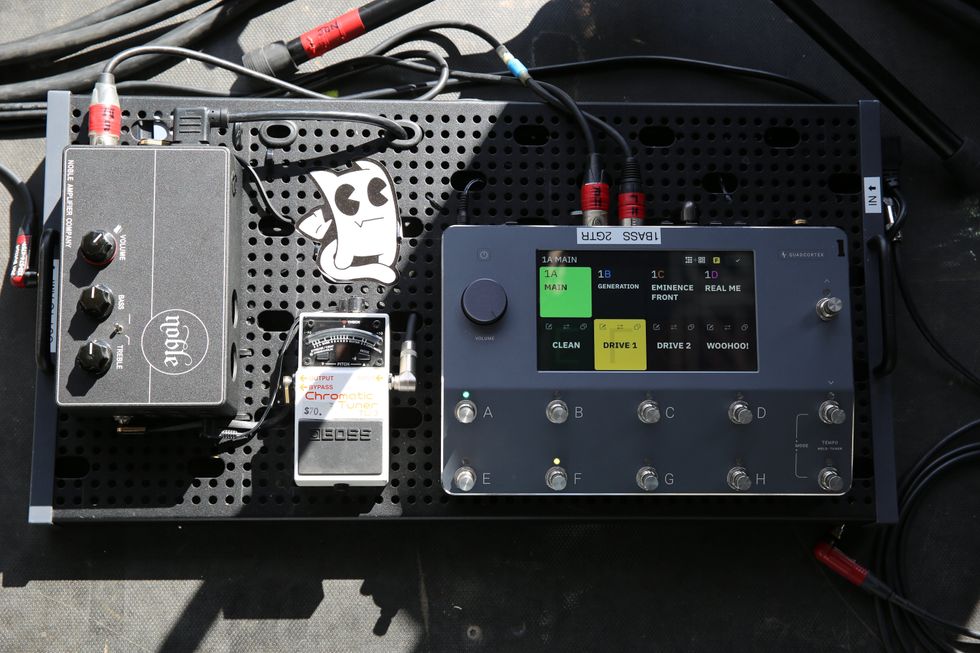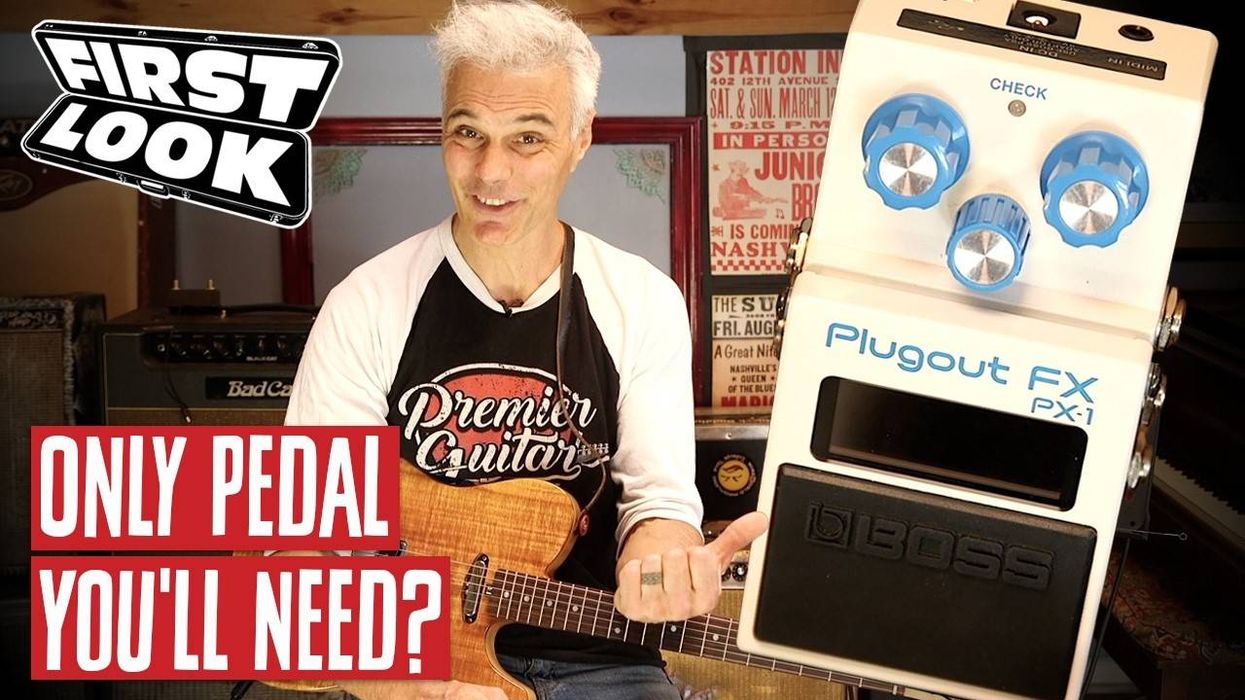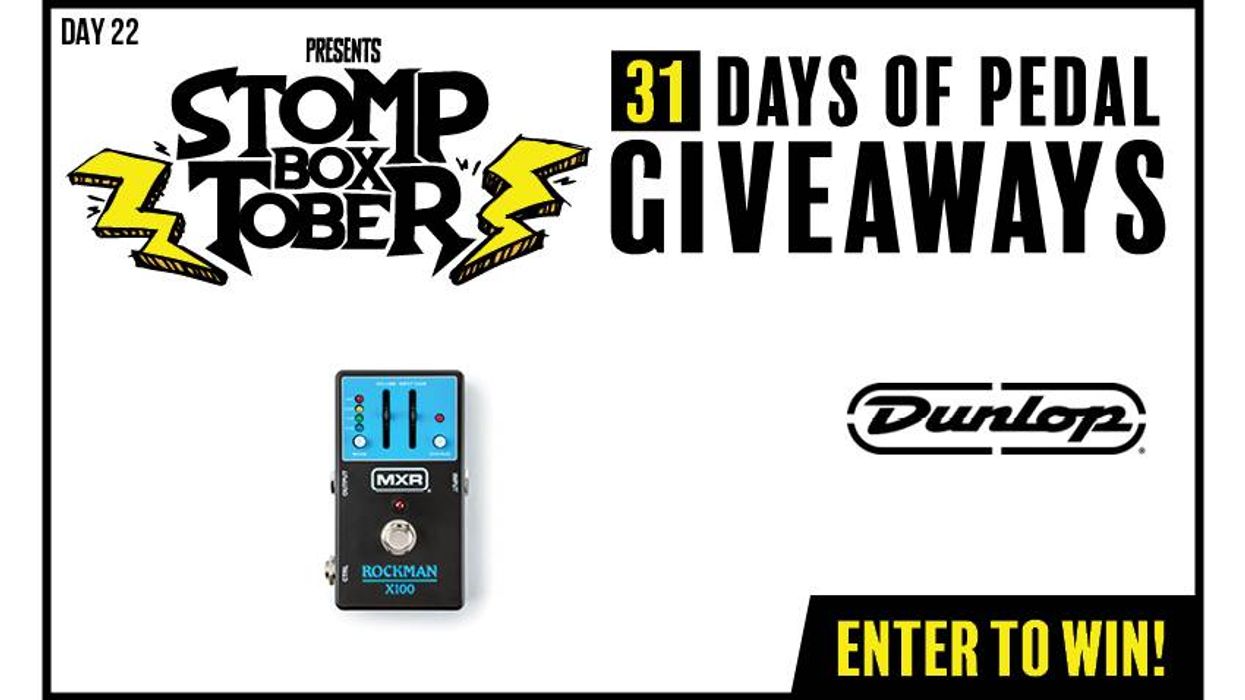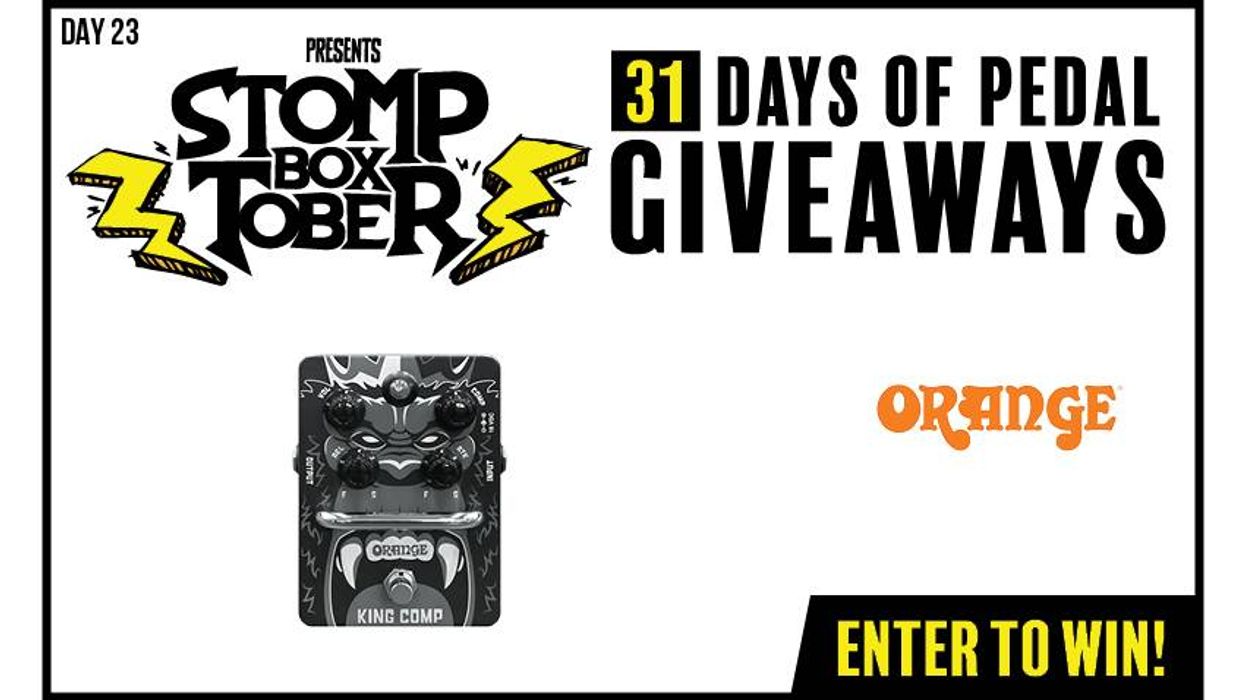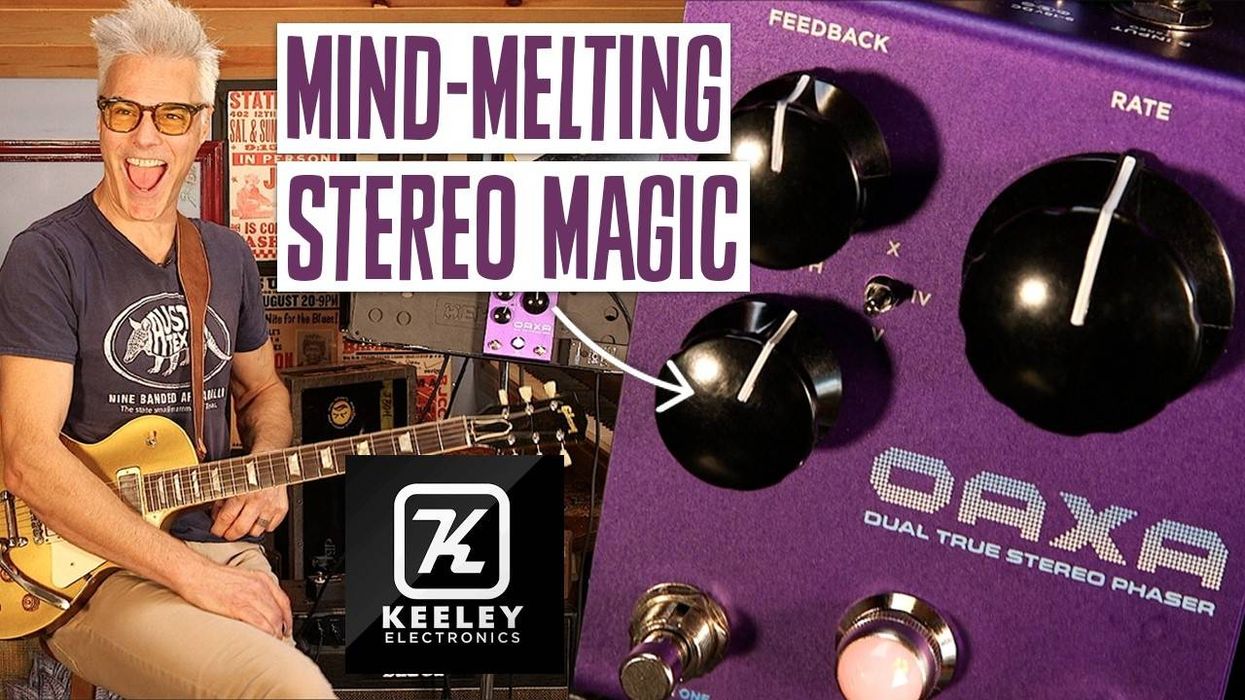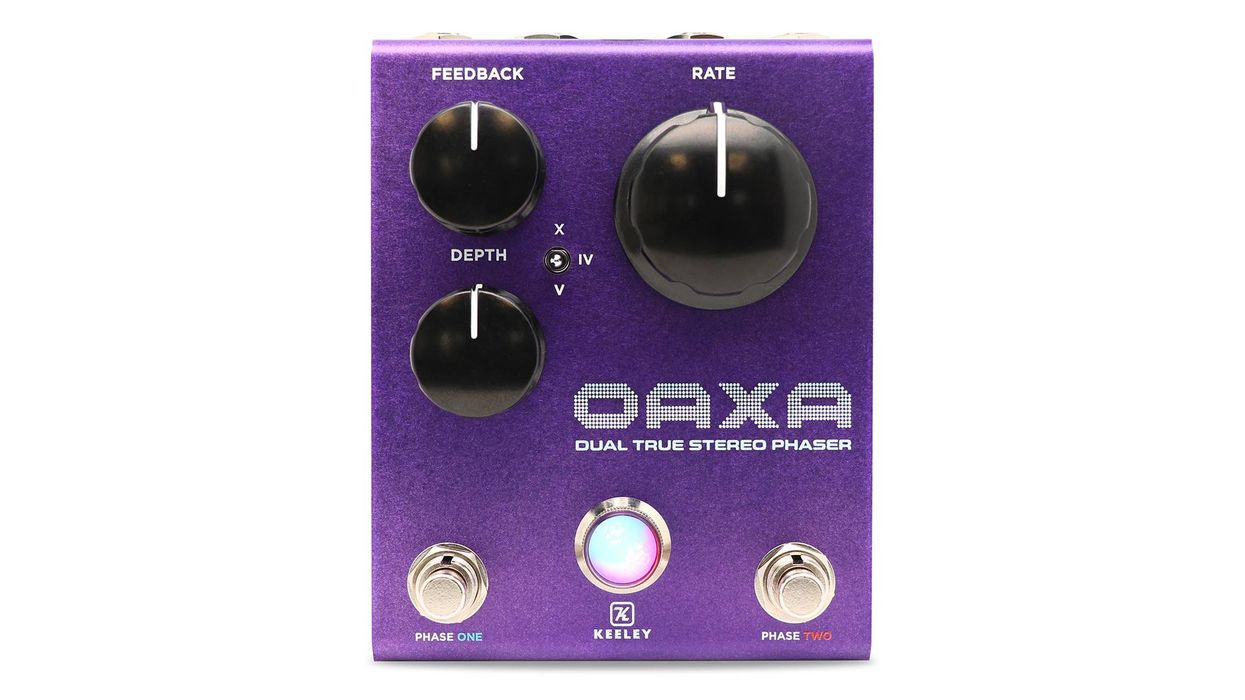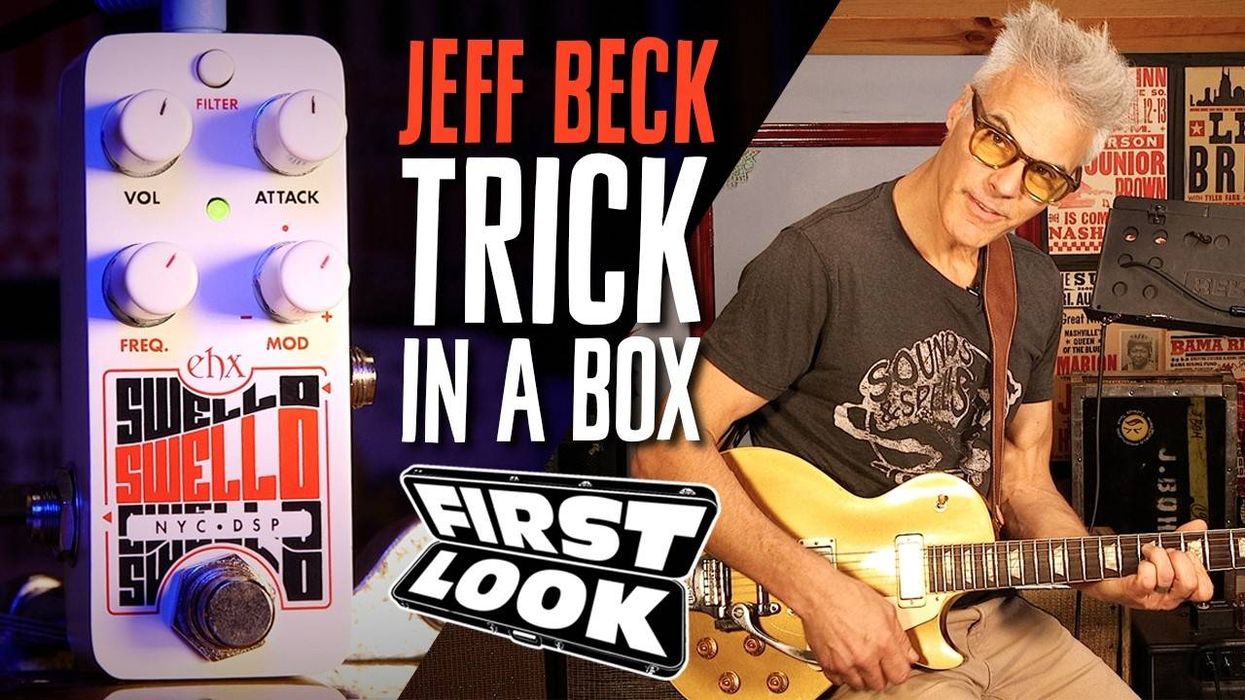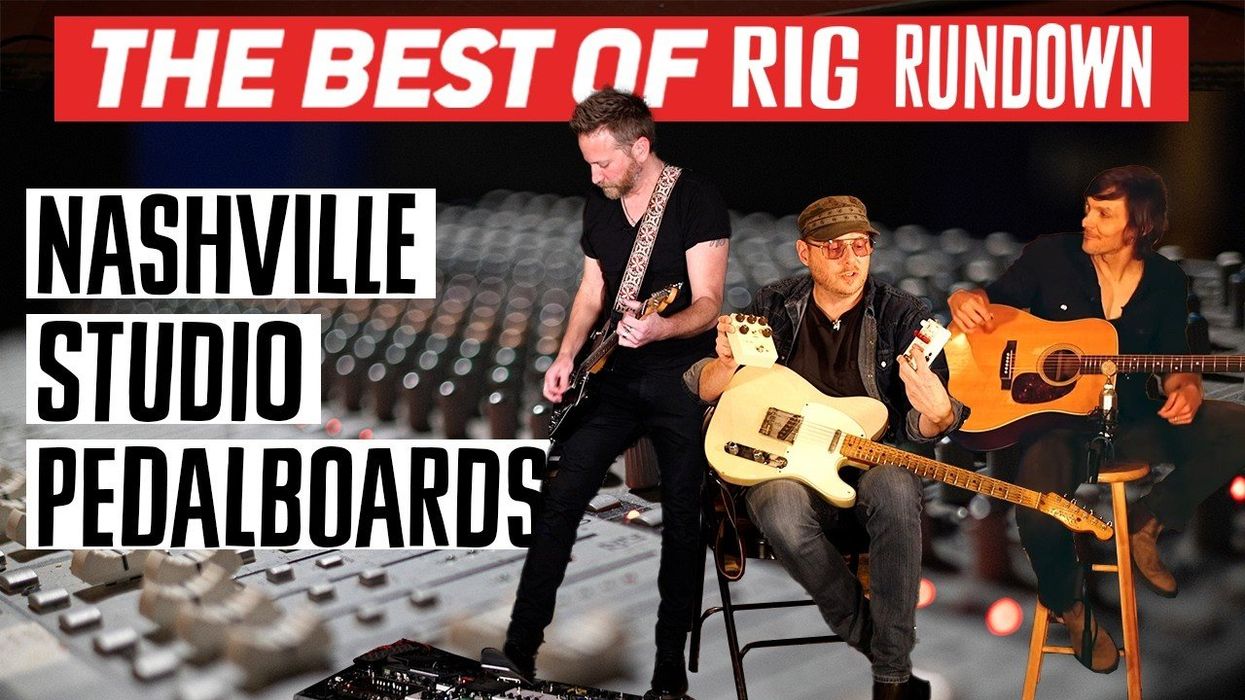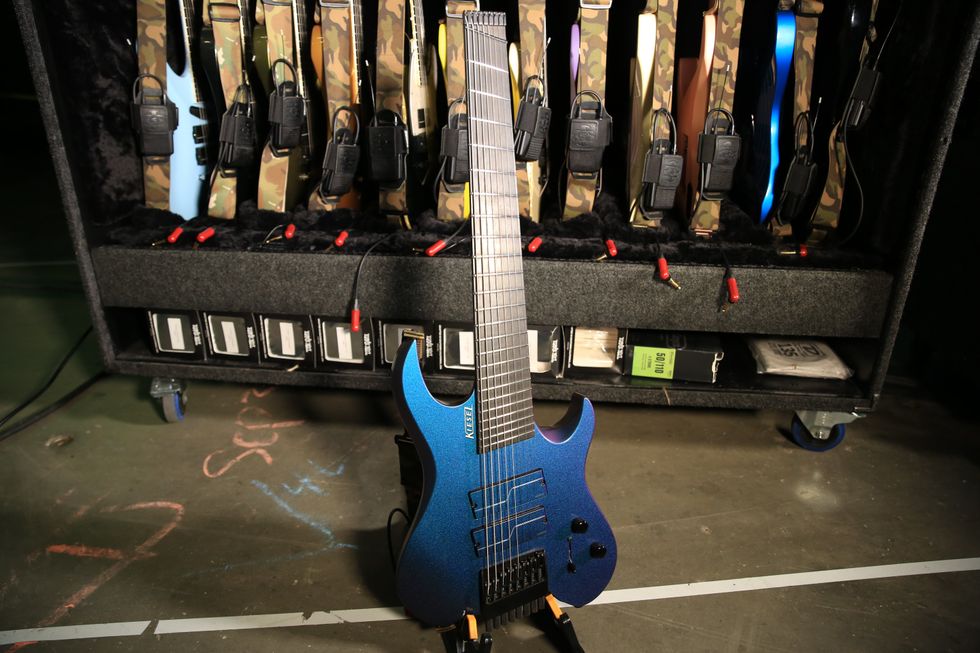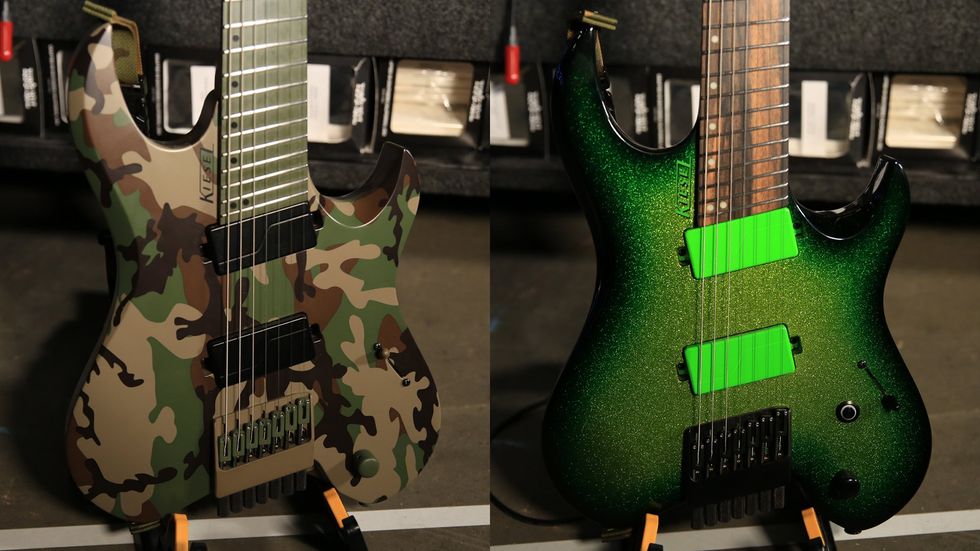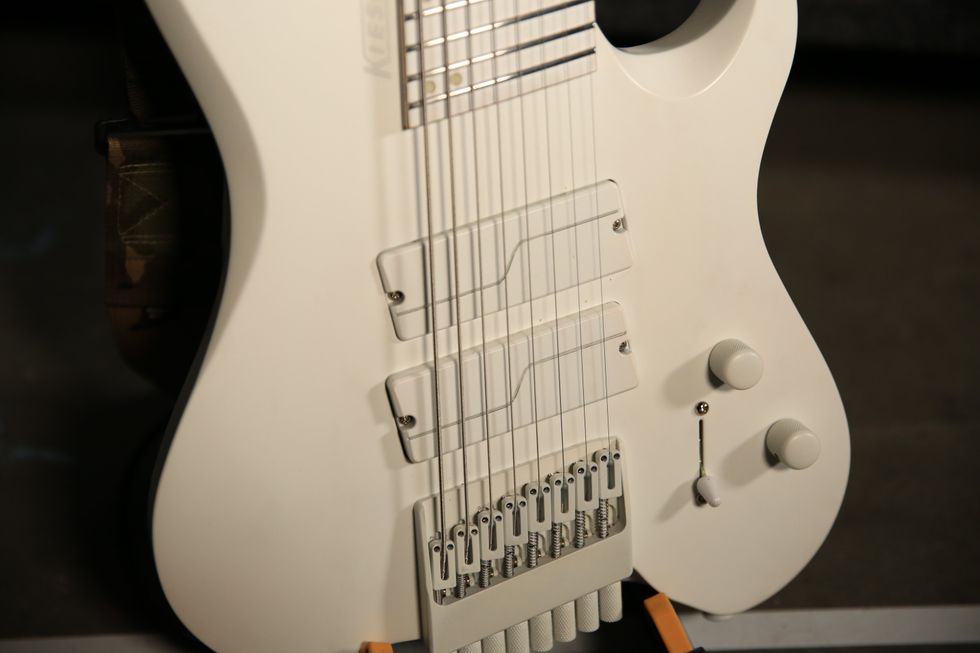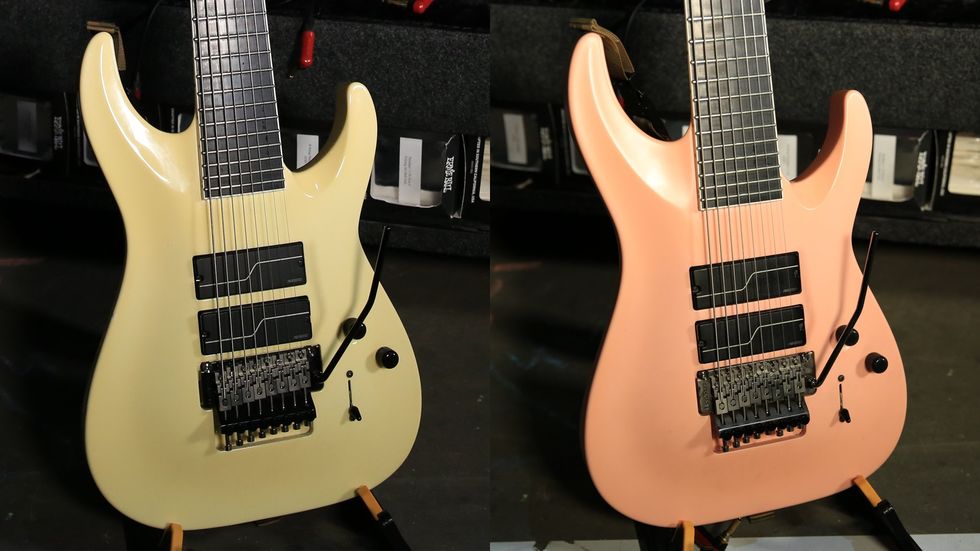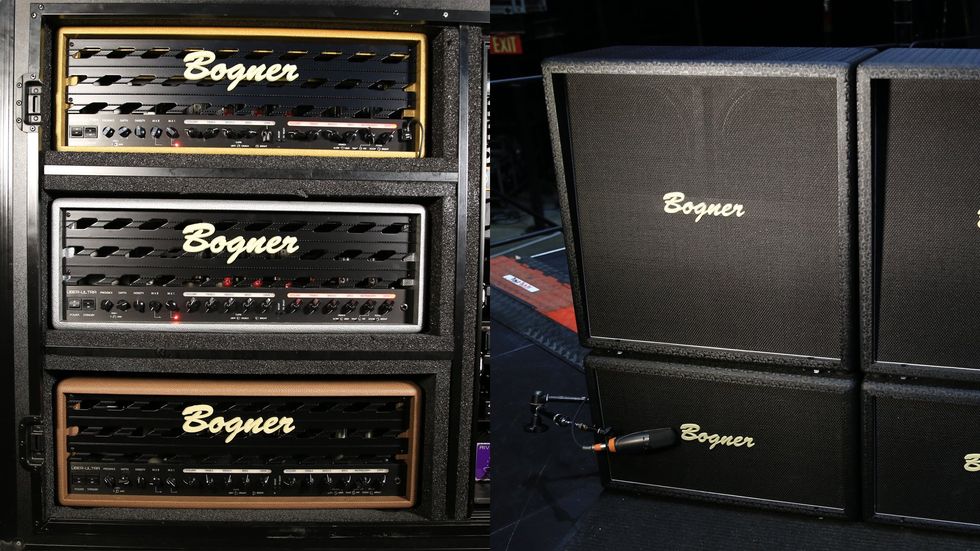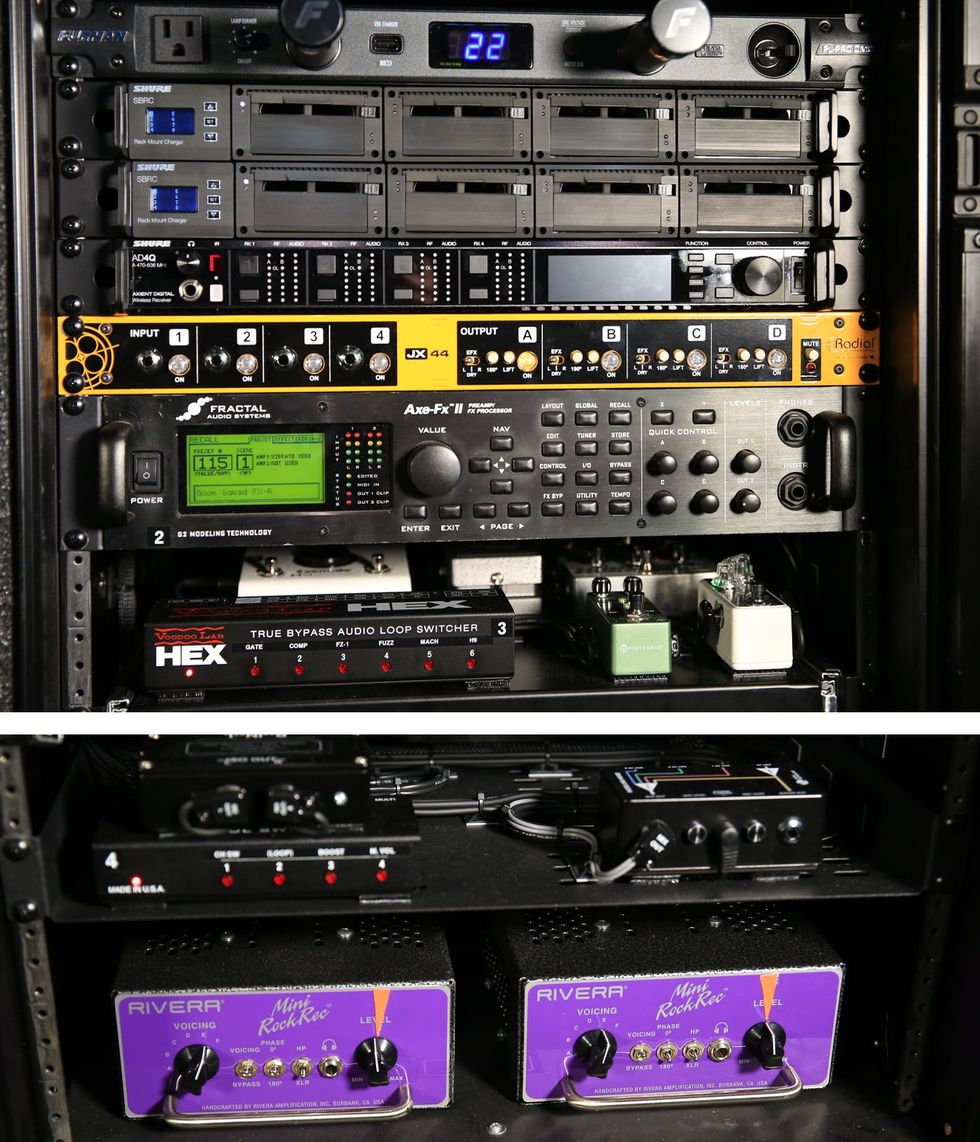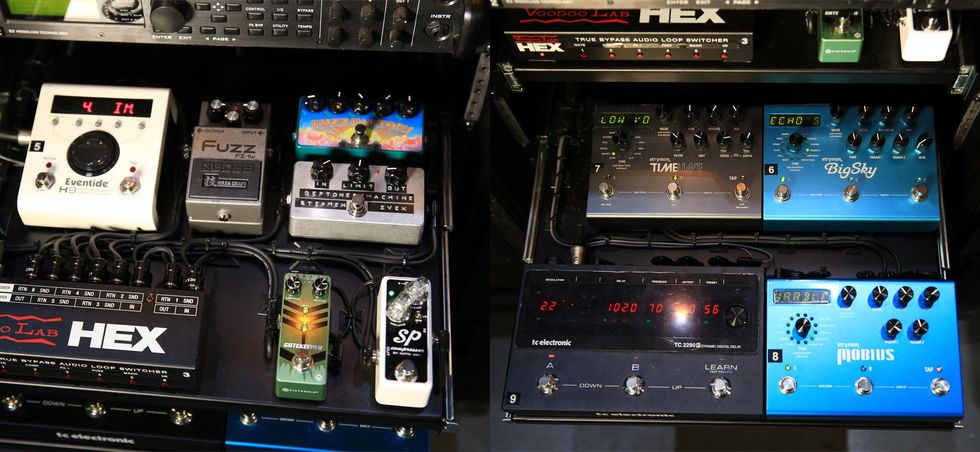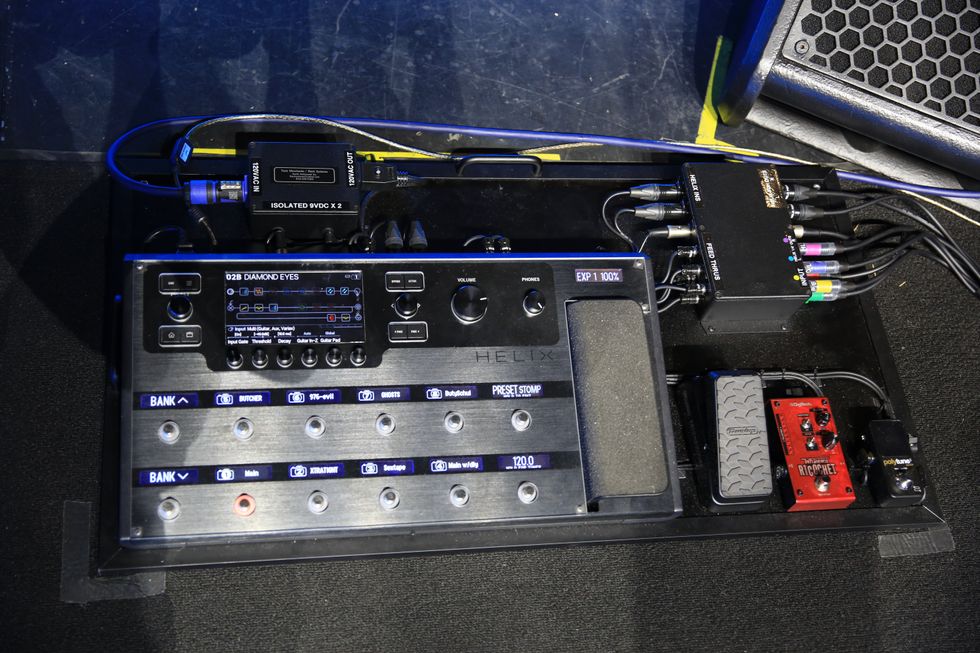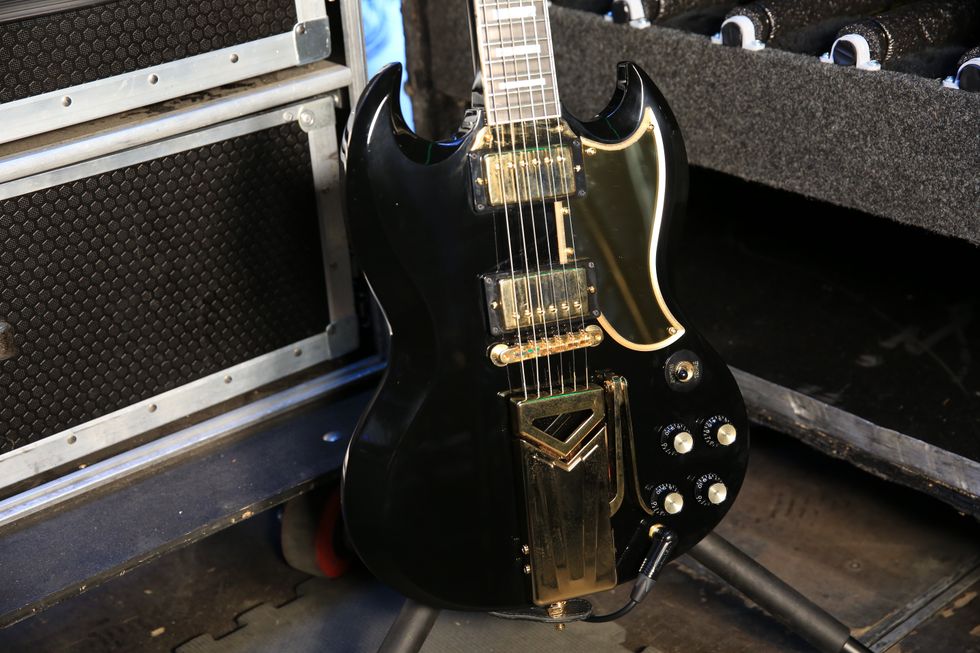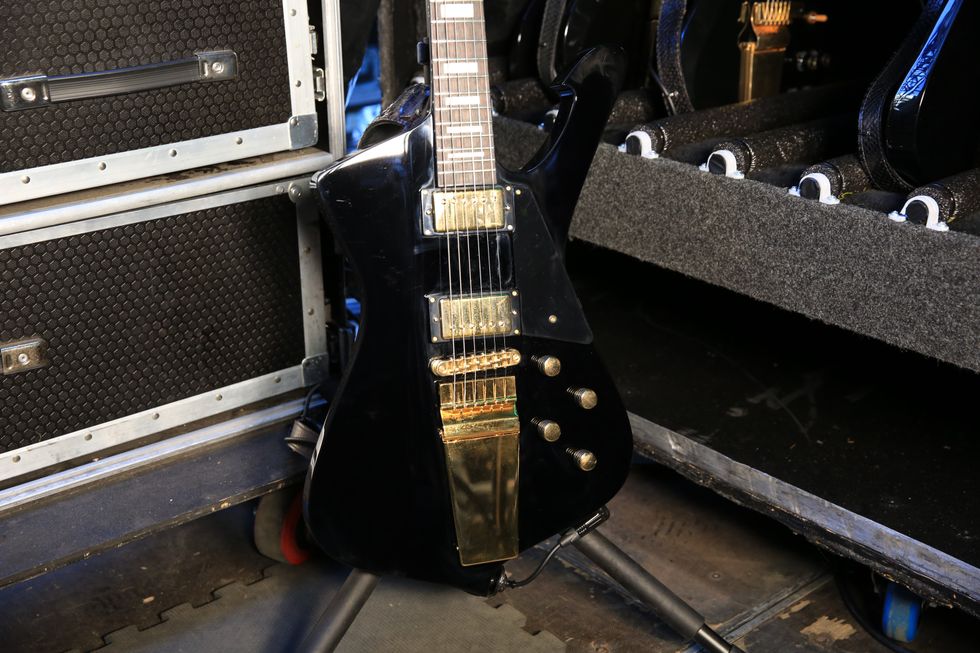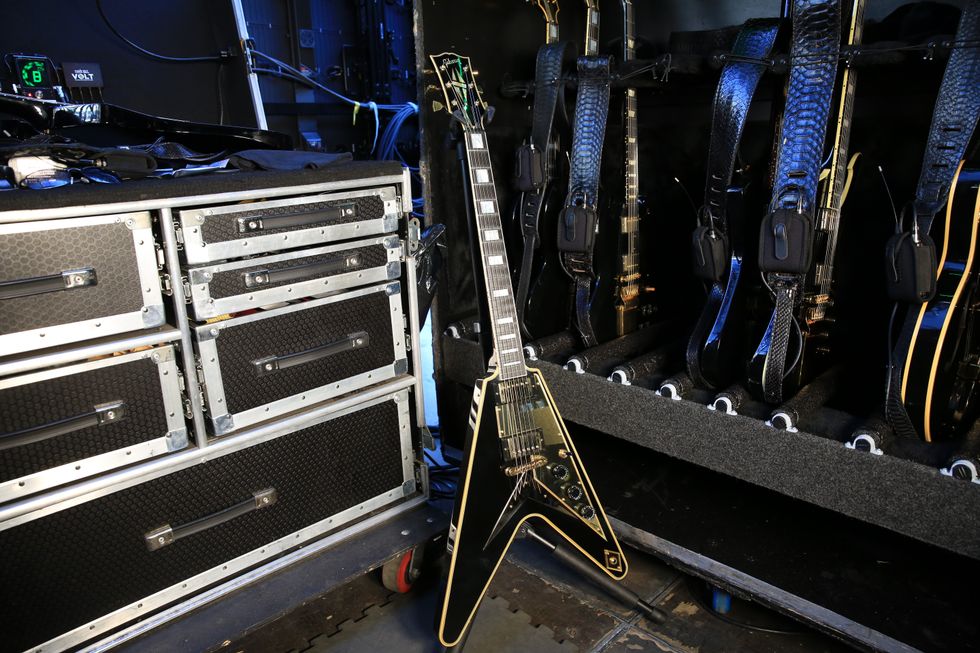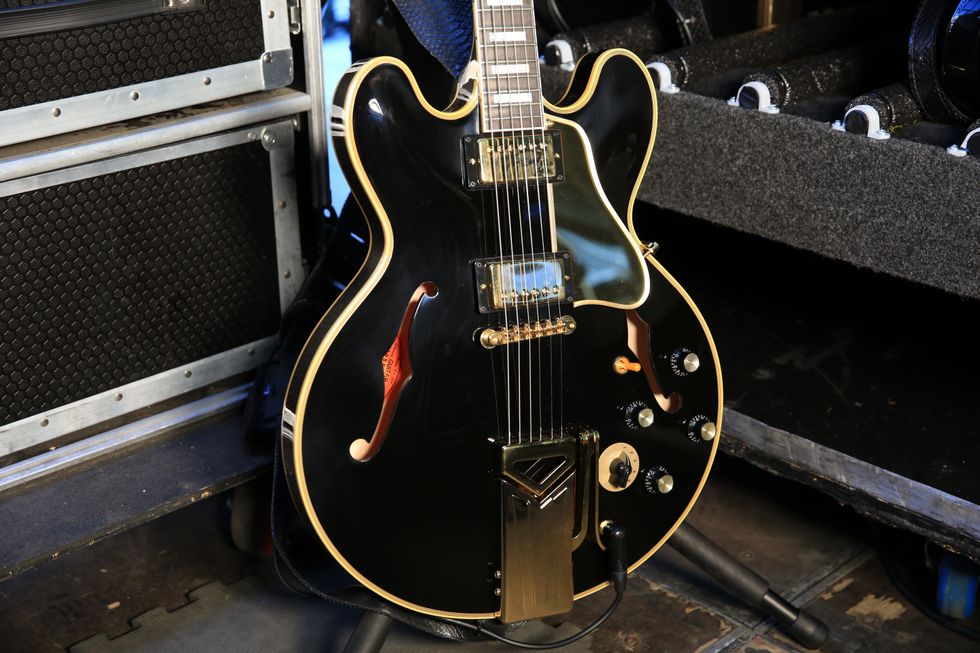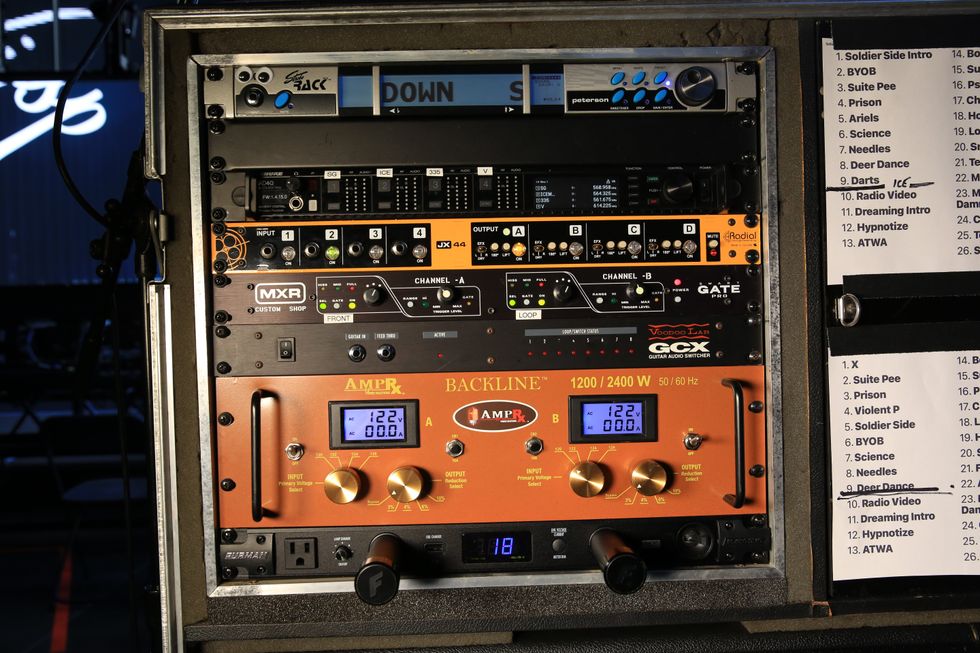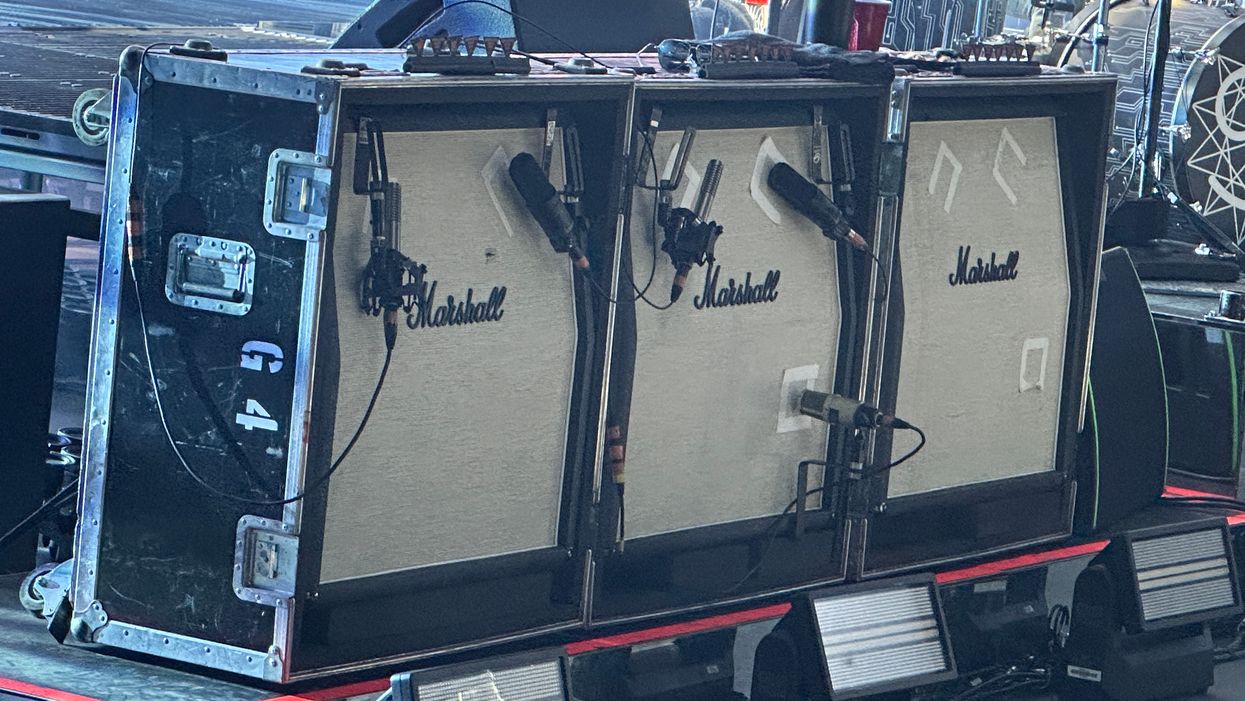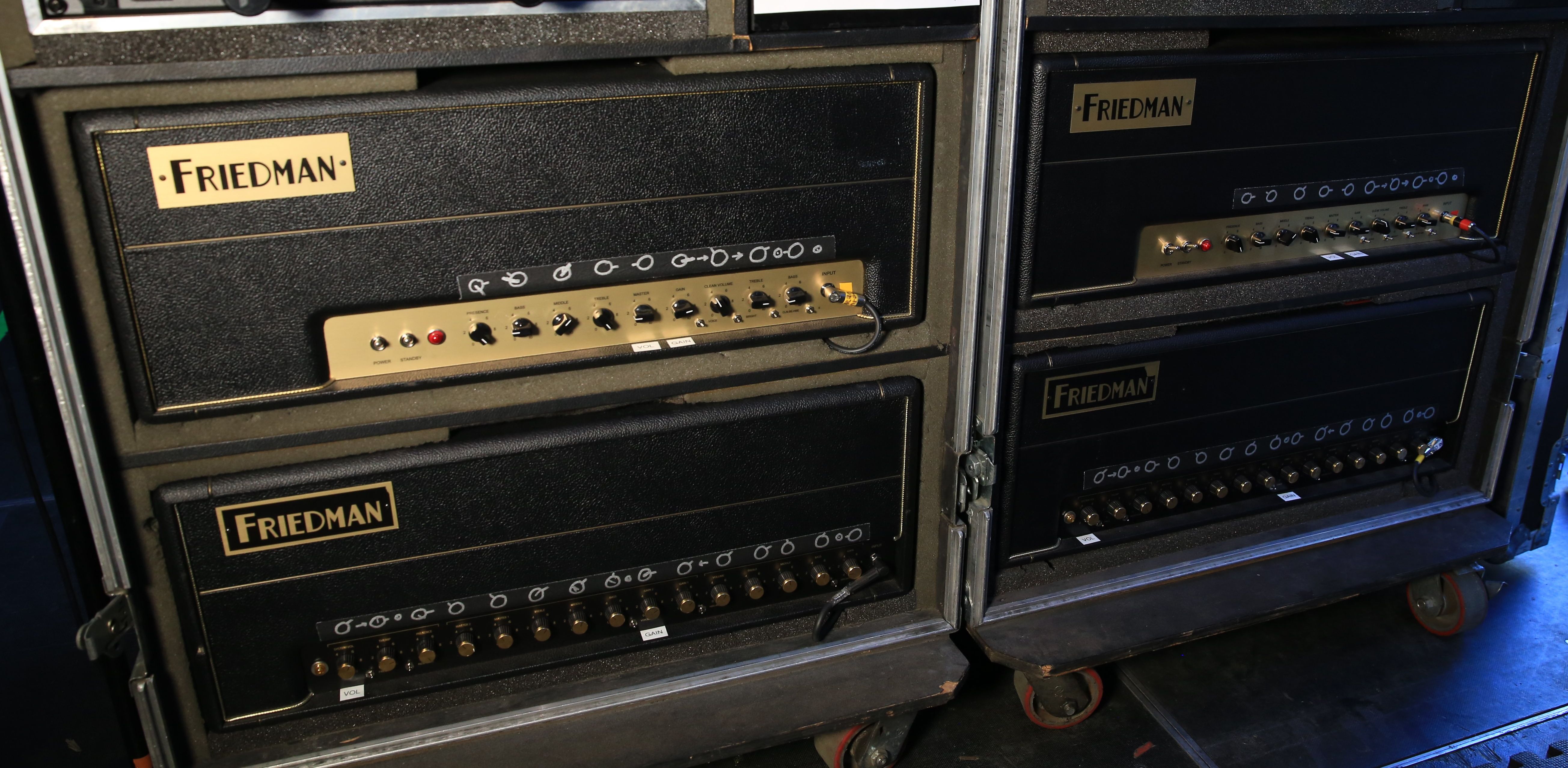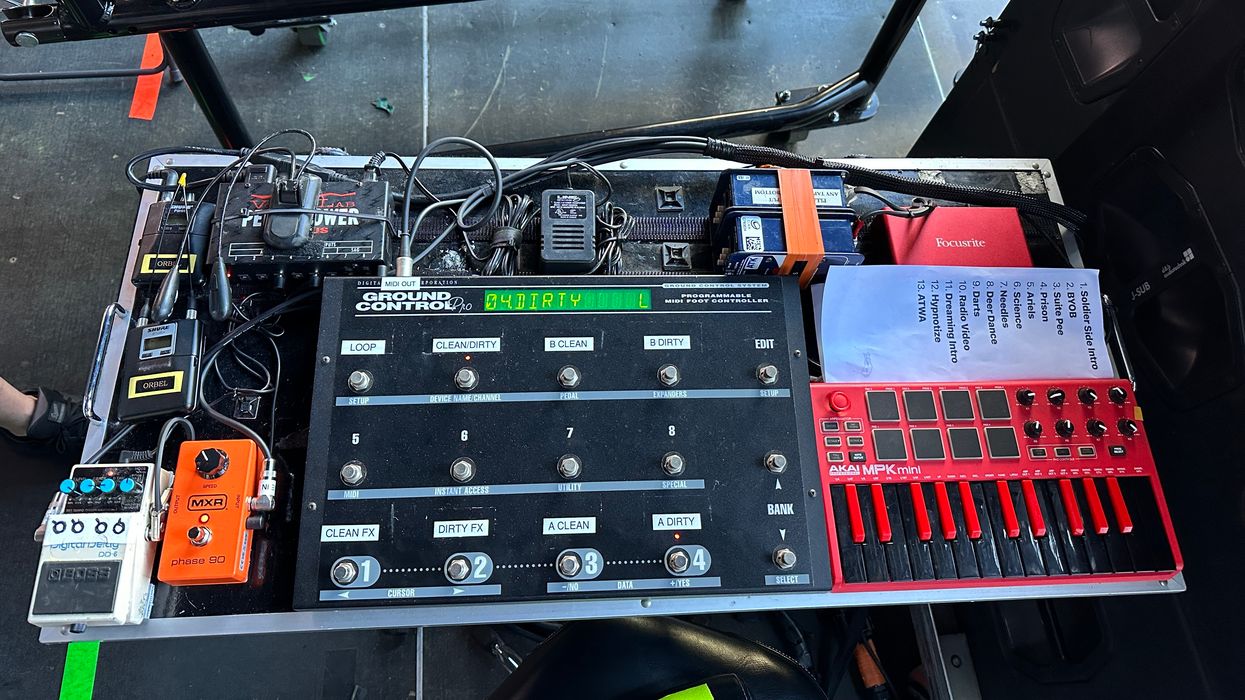The original Cowboys from Hell bassist reclaims his spine-rattling position as the band's charging piston, while his guitar brother brings his fleet of Wylde Audio gear and a few tone sweeteners from Dimebag Darrell's private stash.
The ’90s was a very peculiar musical decade. It entered with L.A.’s party-time hair metal and concluded with the rise of Nu metal, boy bands, and the real Slim Shady. In between those bookends saw the maturation of Metallica, a cold front moved in from the Pacific Northwest with dark clouds of morose and menace, gangsta rap from the coasts flooded the heartland and suburbs, and punk went pop with big hitters from Green Day, Offspring, and Blink 182. But Pantera proudly flew the flag of metal. Those Cowboys from Hell were Phil Anselmo (vocals), Darrell “Dimebag” Abbott (guitar), Rex Brown (bass), and Vinnie Paul Abbott (drums). They took chances and took no prisoners all while having the time of their lives.
They were originally a glam metal band fronted by Terry Glaze. That lineup put out three albums and tirelessly worked the Texas club circuit from 1981 to 1986. They replaced Glaze with New Orleans cat Phil Anselmo who continued the falsetto tradition but made the band more Priest than Stryper. They released Power Metal in 1988 with latex-laced riffs before trading the Sunset Strip for the mosh pit when they released 1990’s breakthrough marauding Cowboys from Hell. And things completely clicked for them when they chiseled out their core sound with 1992’s Vulgar Display of Power that unleashed power-groove, annihilation anthems “Mouth for War,” “Walk,” “This Love,” and “Fucking Hostile.” That set the tone for the rest of the decade and everyone else in metal was playing catch up.
When Metallica went Load and Reload, they went fiercer and forceful with 1994’s Far Beyond Driven (earning them a No. 1 record on Billboard 200). While Reznor and Manson explored techno, dissonance, and industrial sounds, the four metalheads went darker and harder with down-tuned guitars and even faster tempos creating 1996’s The Great Southern Trendkill. And as Slayer tried Nu metal with Diabolus in Musica, Pantera said hold my Crown Royal and doubled down on their demolition with 2000’s Reinventing the Steel.
Bands can burn out and friendships can become more grating than gratifying. Anselmo and Brown continued exploring their side gig with Down (started in the mid-’90s in between Pantera albums and tours) and the idle Abbott Brothers started Damageplan. A war of words filled magazine covers and airwaves making the divide wider. Then, on December 8th, 2004, while performing with Damageplan at Alrosa Villa in Columbus, Ohio, the unthinkable, agonizing, and gut-wrenching onstage murder of Dimebag occurred. (This horrific date was exactly 24 years after the shocking loss of John Lennon.) And in 2018 his brother Vinnie Paul succumbed to coronary artery disease. The idea of Pantera ever seeing the stage, in any form, seemed impossible.
But remaining members Rex Brown and Phil Anselmo tossed around the idea of finding friends to fill in for the Abbott brothers. There are indications they had a list, but anyone who knew anything about Pantera, and especially Dime, would bet their last dollar that Zakk Wylde was the only right option. And Charlie Benante of Anthrax made so many cameos in Pantera’s collection of Vulgar Videos home movies that he was the prime candidate for Vinnie Paul’s throne.
Brown has gone through so much gear. He’s lost amps and donated basses to charity. He’s fostered many fruitful friendships with companies that’s resulted in signature wares for war. His latest partnership has him riding high on a pair of namesake Thunderbirds dressed in black and gold. He still tours with old Spectors who feel like home (if home was a thunderstorm). He’s got a proper pedalboard and rack gear that’s been routed through a RJM switcher (first time ever). And he and tech Bobby Landgraf (also guitar player in Honky and Down for Down IV – Part II) detail the whole chain of tonal command. Then we have a blast chatting with Zakk Wylde who covers his toolbox of Warhammers and Master 100 heads. He ponders what it must’ve been like to have been Eddie Van Halen or Randy Rhoads who toured with their iconic instruments and not having any backups! And then his longtime tech Stephen Murillo goes over his rack gear that includes three pieces from Dimebag Darrell’s original Pantera rig.
Rattle and Shake

In recent years Rex Brown has partnered up with Gibson and two years ago saw his first signature Thunderbird take flight. It has a mahogany body, a mahogany neck (with set construction), rosewood fretboard, Hipshot Mini-clovers with Drop D Xtender, Graph Tech nut, and Gibson’s Rexbucker Thunderbird humbuckers. His touring models feature a set of EMG X active pickups for more output and attack. This one (and other 4-strings) ride with Ernie Ball 2733 Hybrid Slinky Cobalt Electric Bass strings.
Thunder Buddy
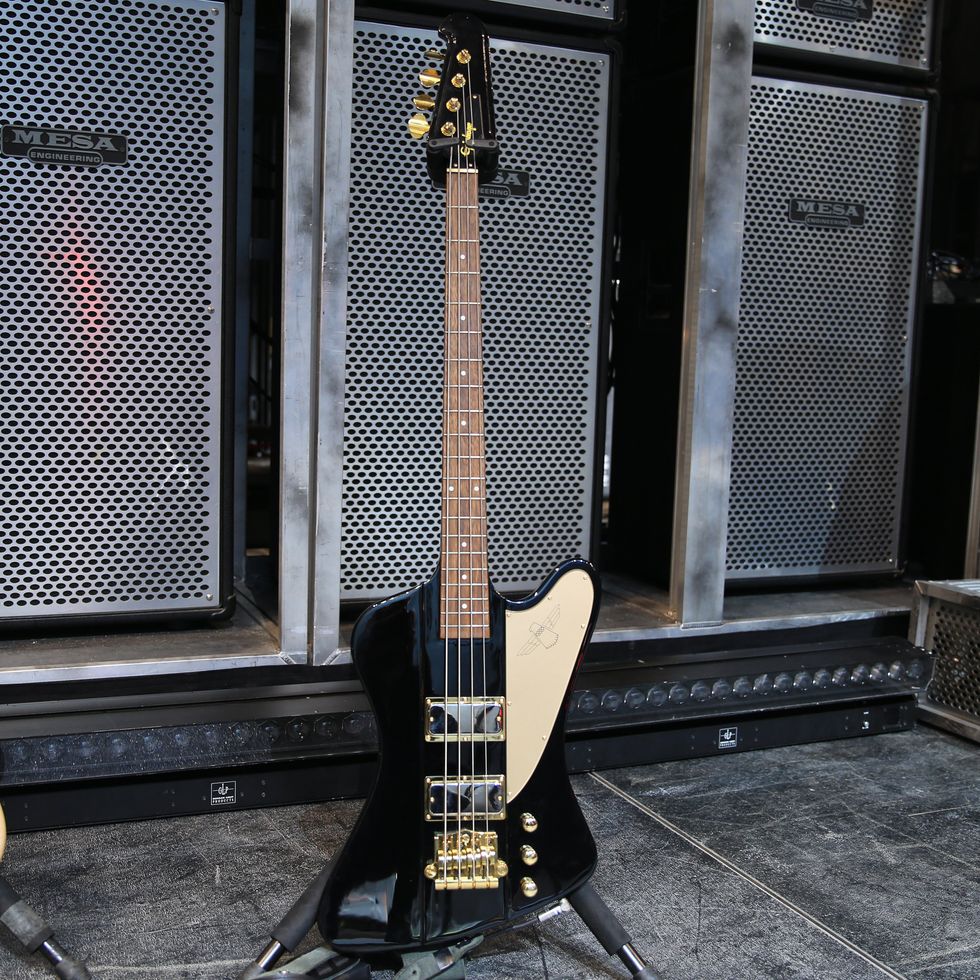
Here’s a thriftier way to rumble like Rex with his Epiphone signature Thunderbird. It has a mahogany body, 9-piece maple-and-walnut neck, Indian laurel fretboard, brass nut, Babicz FCH 3-Point bridge, and a set of Epiphone ProBucker 760 Bass humbuckers that Rex said remind him of the Bicentennial Thunderbird thumpers.
Spector Twins
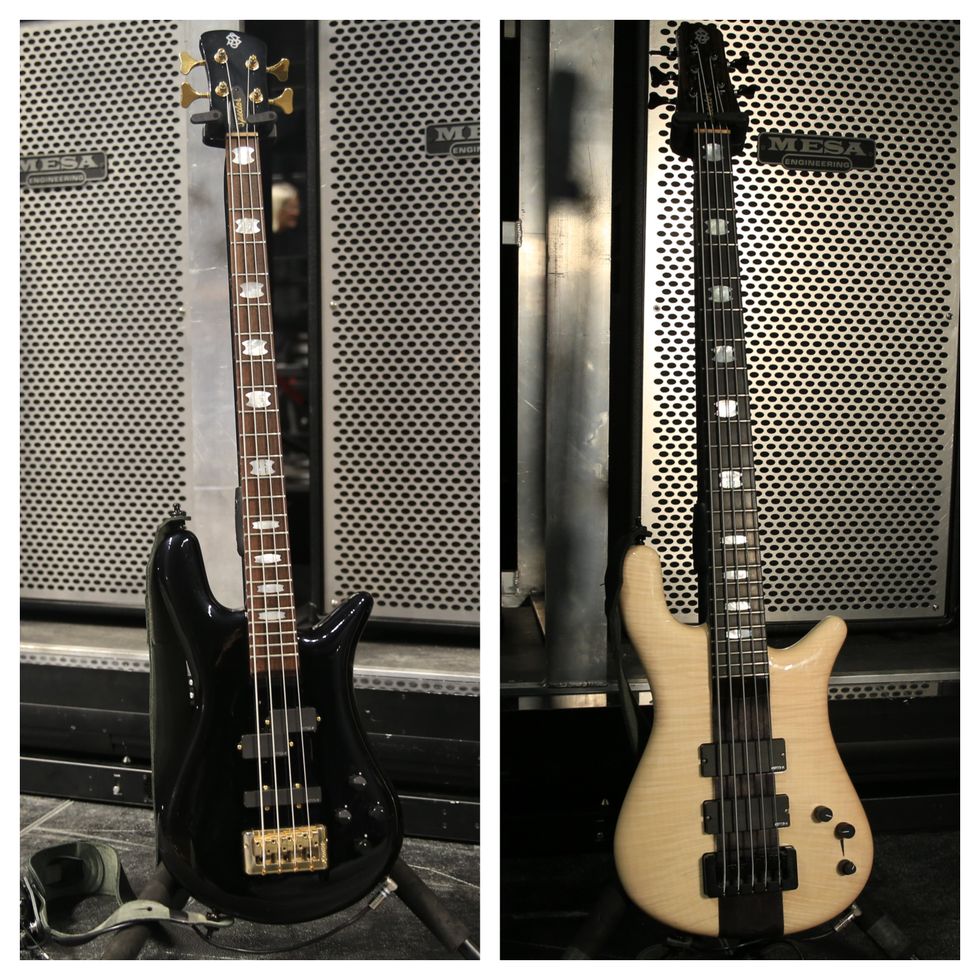
This pair of ebony and ivory Spectors—one of which has been clobbering concertgoers for over 15 years. The one on the left is a 2008 Euro 4 what Rex calls “Mother Glory,” and it’s the one he always goes back to. It was originally painted white, but he darkened its exterior and brandished it in gold.
The other Spector is 2023 USA NS-5 in black-and-white gloss finish that is his “baby” and he “loves it because he just can’t beat the fucking sound of it. It just won’t go away no matter what.”
Both have EMG X pickups—the Euro 4 has the PJX Ceramic PJ Bass set and the USA NS-5 has the EMG 40DCX.
And the 5-string Spector takes Ernie Ball 5-String Slinky Cobalt Bass Strings (.45–.130).
Slugger ‘n’ Chugger
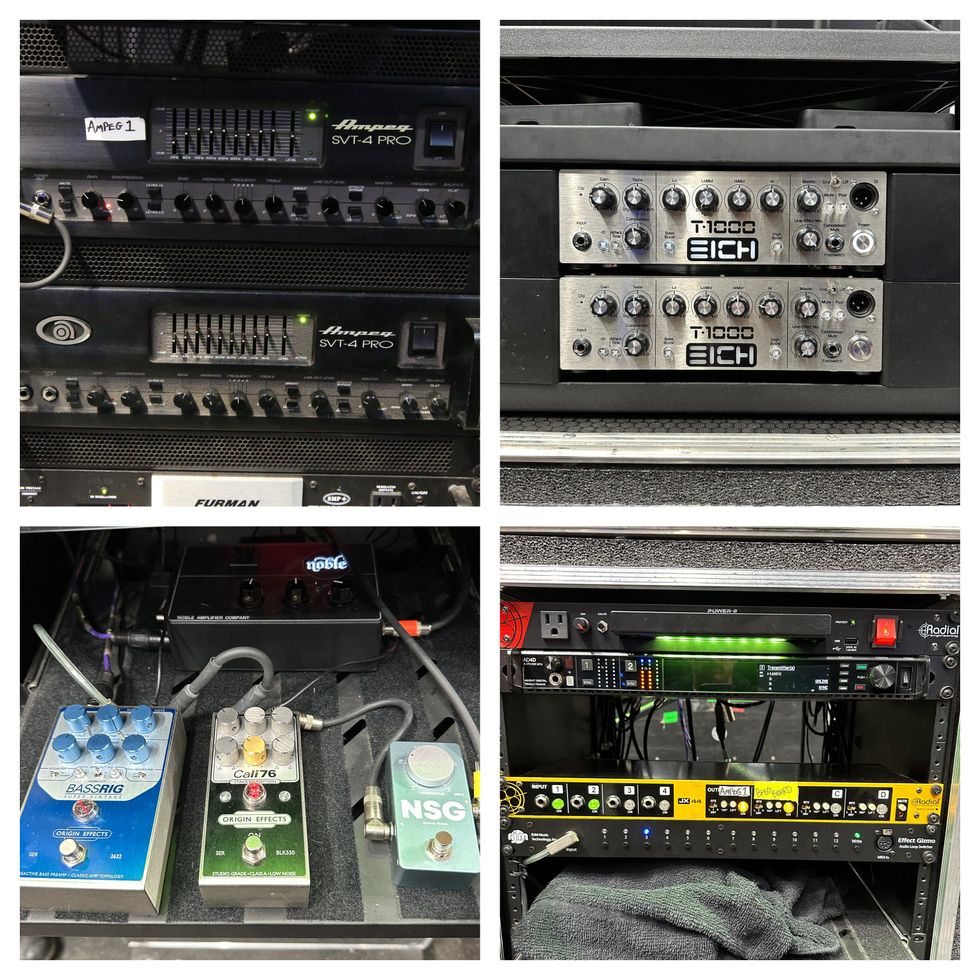
Brown has plugged into as many heads as you can think, but he’s never been happier than when he’s got a Ampeg SVT-4 Pro supporting him.
The Eich T1000 gives life to the Eich Bass Board. Their primary use was when supporting Metallica and Pantera was forced to have a clean stage, but Rex still wanted to feel the earth shake under his legs. He enjoyed the quake enough to implement on their headline run.
These boxes are tucked into the rack and are always on—an Origin Effects BassRig Super Vintage Bass Preamp, an Origin Effects Cali76 Stacked Edition Dual-stage Compressor, a Darkglass NSG Noise Gate Bass, and a Noble Preamp DI.
Lastly, his rack holds utilitarian items like the Shure AD4D Two-channel Digital Wireless Receiver, Radial JX44 V2 Concert Touring Guitar & Amp Signal Manager, and the RJM Effects Gizmo.
Moving Mesas
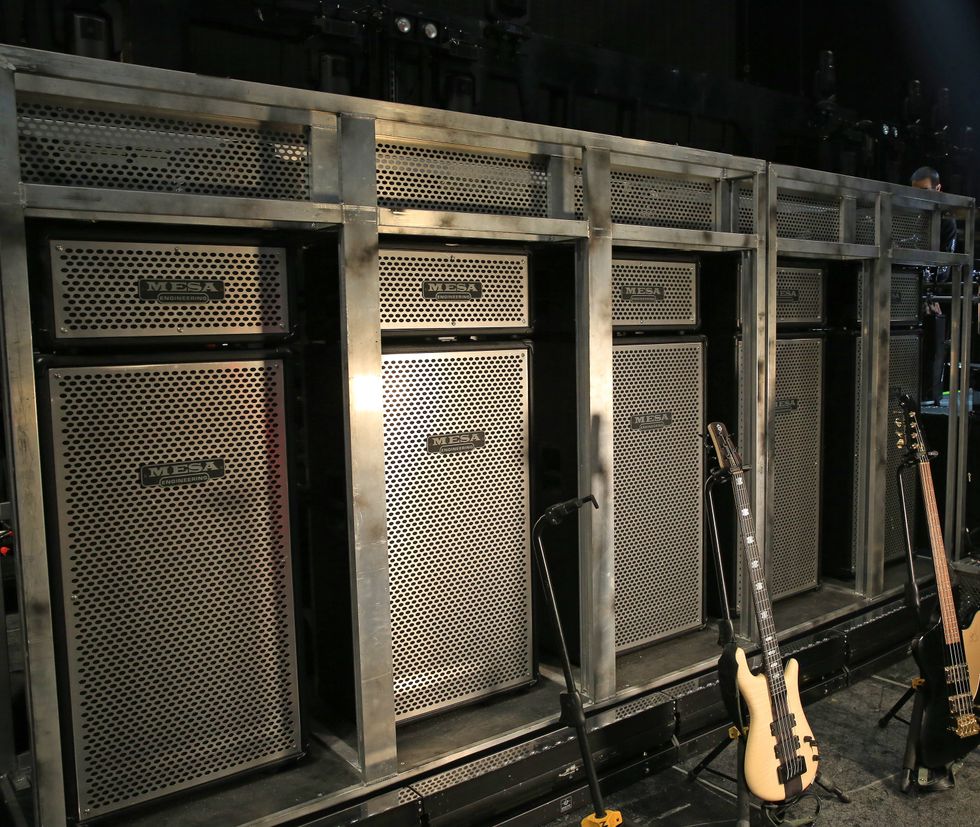
Rex has been on the lookout for anybody able to recast the Ampeg “fridge” 8x10. He claims Mesa/Boogie cracked the code with these custom Mesa Boogie 8x10 Traditional Powerhouse Cabinets that have custom-voiced Eminence speakers.
Rex Brown's Pedalboard
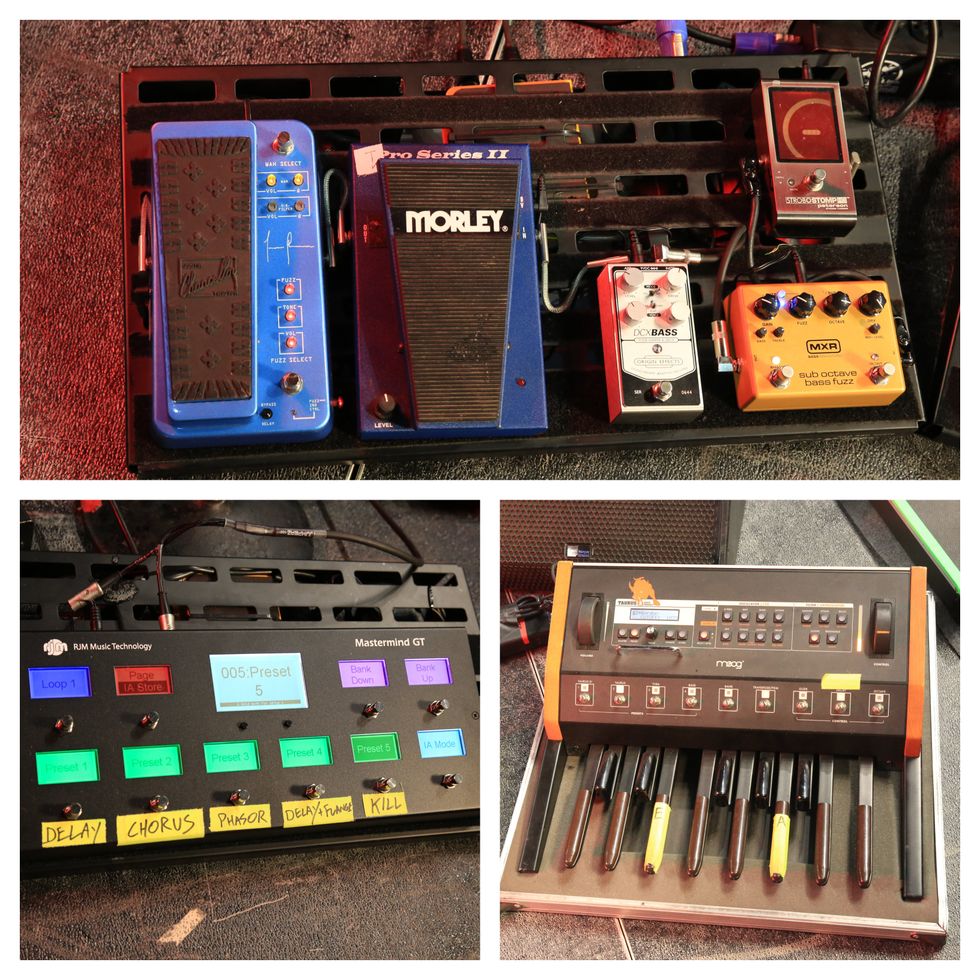
This clean configuration is the first time Rex Brown has utilized a switching system. His stage board has a Dunlop JCT95 Justin Chancellor Cry Baby Wah, a 2000s Morley Pro Series II Bass Wah, Origin Effects DCX Bass Tone Shaper & Drive, a MXR M287 Sub Octave Bass Fuzz, and a Peterson StroboStomp HD.
The brain of everything in the rack and onstage is the RJM Mastermind GT.
And to help “move mountains,” Rex has a Moog Taurus III.
Thor's Four
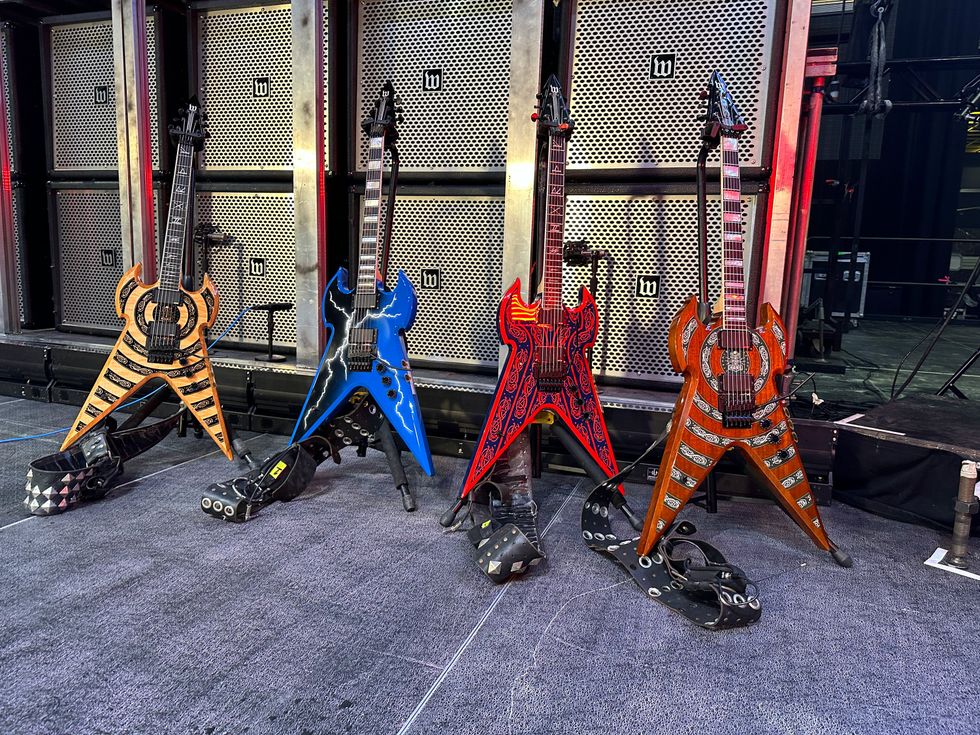
Zakk travels with familiar company when touring with Pantera, Zakk Sabbath or Black Label Society. It’s Wylde Audio all the time. This winter 2024 run saw him exclusively run with his Warhammer models. They’re built with a mahogany body, maple tops, 3-piece maple neck, ebony fretboard, a Floyd Rose locking tremolo, and his signature EMG 81/85 pickups. All these beasts have Dunlop DHCN1048 Heavy Core NPS strings (.010–.048).
St. Dime
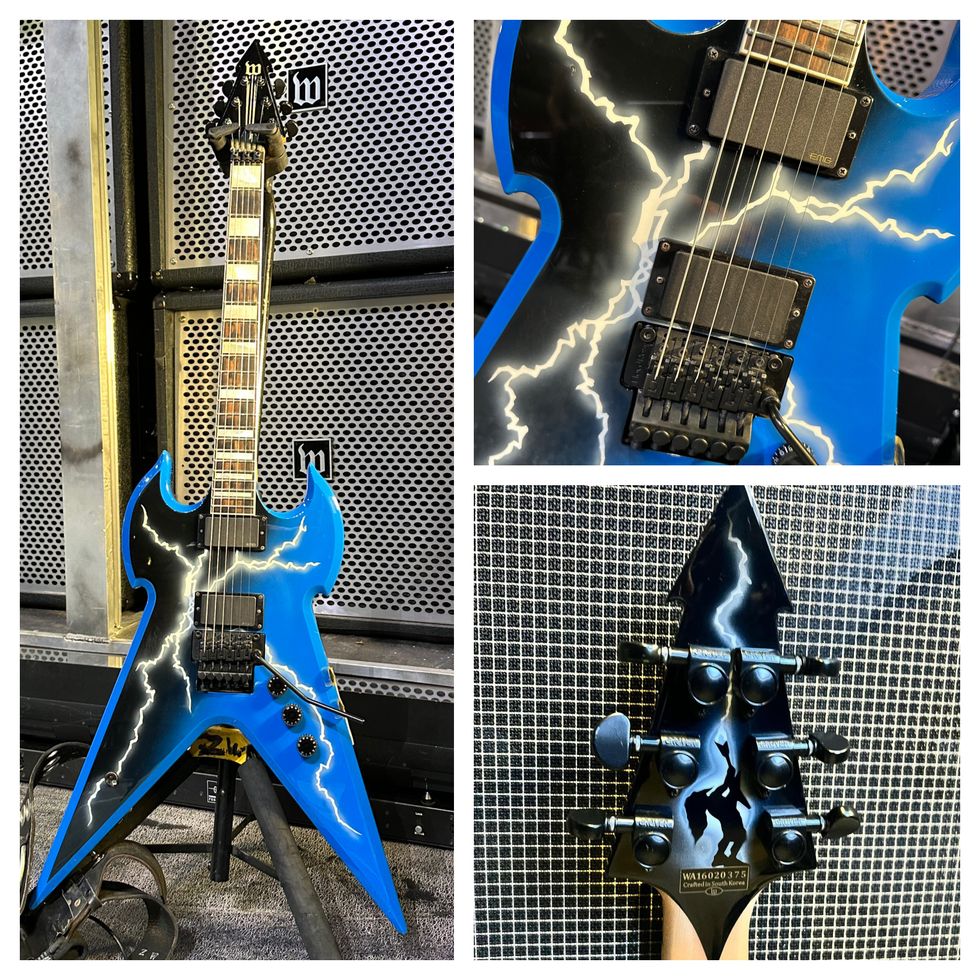
Here’s a special Warhammer that approximates the iconic lightning-strike, blue-burst “Dean from Hell” that old pal Dimebag Darrell used through Pantera’s heyday. To nail the paint job, he enlisted Matt “Chewy” Dezynski, who painted Dime’s Washburn guitars in the 1990s.
Wylde and Free
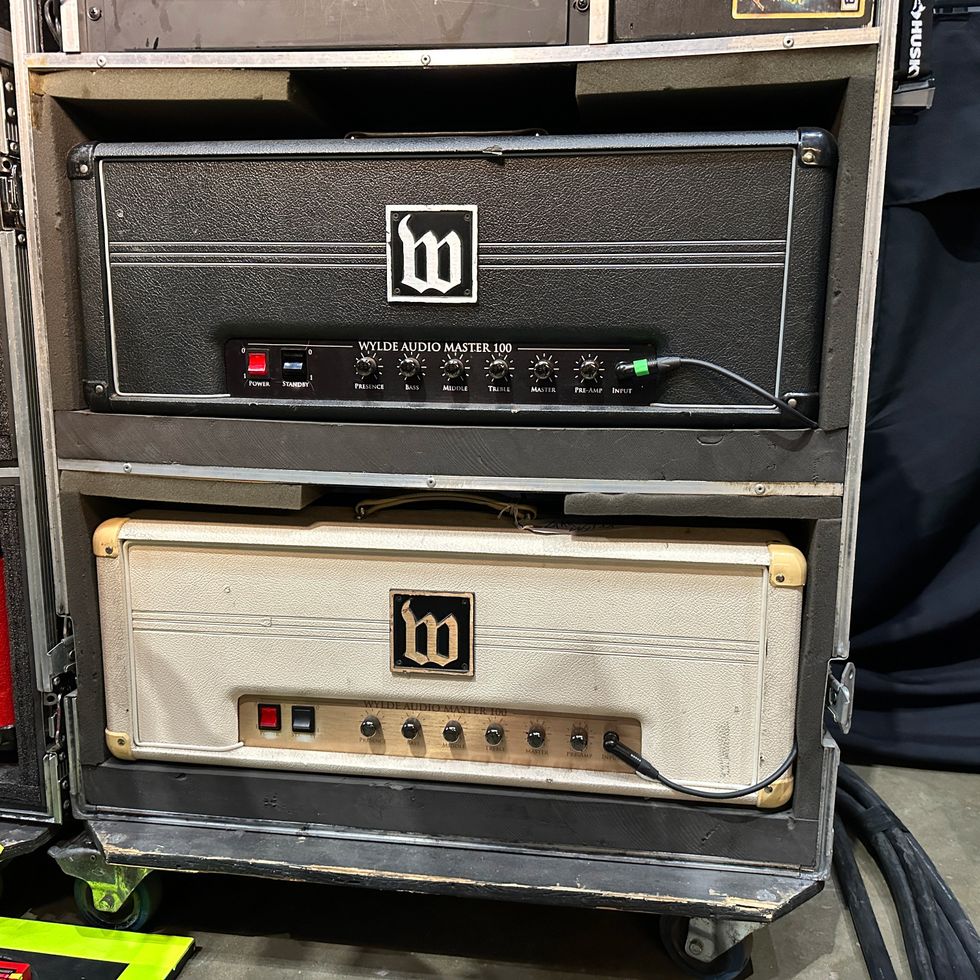
Just like in our 2016 Rig Rundown with Zakk, he’s still plugging into his Wylde Audio Master 100 heads with a stereo configuration. He has another Master 100 and an old Marshall JCM800 on deck. All the heads are routed into his Wylde Audio 4x12s that are all loaded with Z-Dub’s Electro-Voice EVM12L Black Label Zakk Wylde 300W speakers.
Dime's Delights
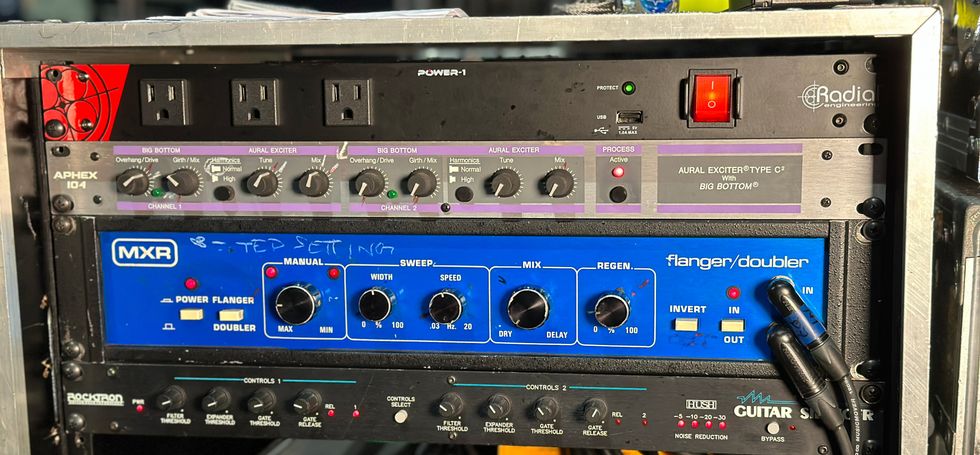
Dimebag Darrell’s right-hand man and tonal technician Grady Champion was on the tour and brought some of his old friend’s secret sauce. Here you’ll see fixtures in Dime’s live and studio sound that include an Aphex Aural Exciter Type C2 Model 104 with Big Bottom, MXR M126 Flanger/Doubler, and a Rocktron Hush Guitar Silencer.
Zakk Wylde's Pedalboard
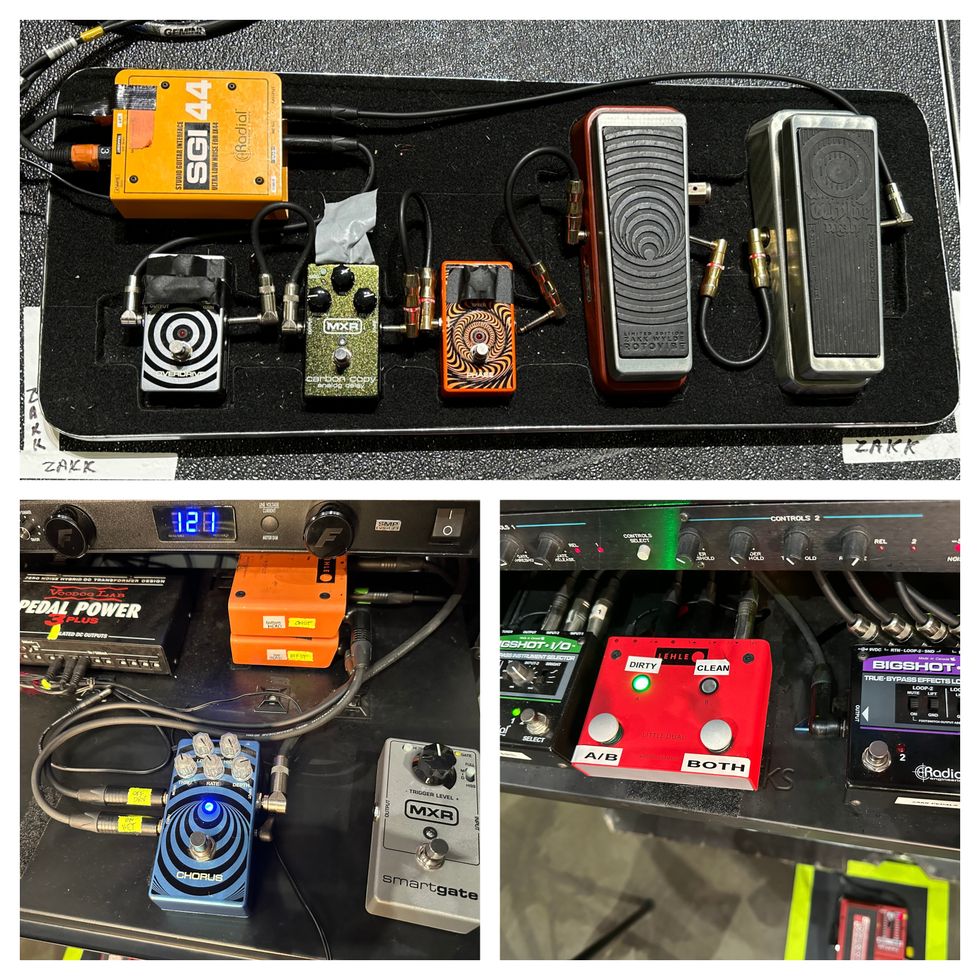
Out front Zakk sees nothing but Dunlop bullseyes. His signature arsenal of effects seen here include a MXR Wylde Audio Overdrive, a MXR Wylde Audio Phase, a Wylde Audio Cry Baby wah, and a Dunlop ZW357 Zakk Wylde Signature Rotovibe. The lone box that isn’t branded Wylde is a standard fare MXR Carbon Copy.
His offstage rack is home to a MXR Smart Gate and a MXR Wylde Audio Chorus (that’s always on). Both are powered by a Voodoo Lab Pedal Power 3 Plus. Another drawer holds Radial BigShot I/O True-bypass Instrument Selector, Lehle Little Dual II Amp Switcher, and a Radial BigShot EFX Effects Loop Switcher.

Gibson Rex Brown Thunderbird Signature Bass Ebony
Epiphone Rex Brown Thunderbird Bass
Spector Bantam 5 Bass
Spector Euro 4
EMG PJX Set Active Ceramic PJ Bass Pickup Set Black
Ampeg SVT 4-Pro
Dunlop JCT95 Justin Chancellor Cry Baby Wah Pedal
Origin Effects BassRig Super Vintage Bass Preamp Pedal
Origin Effects Cali76 Stacked Edition Dual-stage Compressor Pedal
Darkglass NSG Noise Gate Bass Pedal
Origin Effects DCX Bass Tone Shaper & Drive Pedal
MXR M287 Sub Octave Bass Fuzz Pedal
MXR Carbon Copy
Electro-Voice EVM12L Black Label Zakk Wylde Signature 12-inch 300-watt Guitar Speaker - 8 Ohms
EMG ZW Zakk Wylde Active Signature Humbucker 2-piece Pickup Set - Black
MXR Wylde Audio Overdrive Pedal
MXR Wylde Audio Phase Pedal
MXR Wylde Audio Chorus Pedal
Dunlop DHCN1048 Heavy Core NPS Electric Guitar Strings - .010-.048 Heavy
Lehle Little Dual II Amp Switcher
Radial BigShot I/O True-bypass Instrument Selector
Radial BigShot EFX Effects Loop Switcher
Roland JC-120 Jazz Chorus 2 x 12-inch 120-watt Stereo Combo Amp
MXR M135 Smart Gate Pedal
Voodoo Lab Pedal Power 3 High Current 8-output Isolated Power Supply
Shure AD4D Two-channel Digital Wireless Receiver
Radial JX44 V2 Concert Touring Guitar & Amp Signal Manager
Ernie Ball 2733 Hybrid Slinky Cobalt Electric Bass Guitar Strings - .045-.105
Ernie Ball 5 String Slinky Cobalt Bass Strings


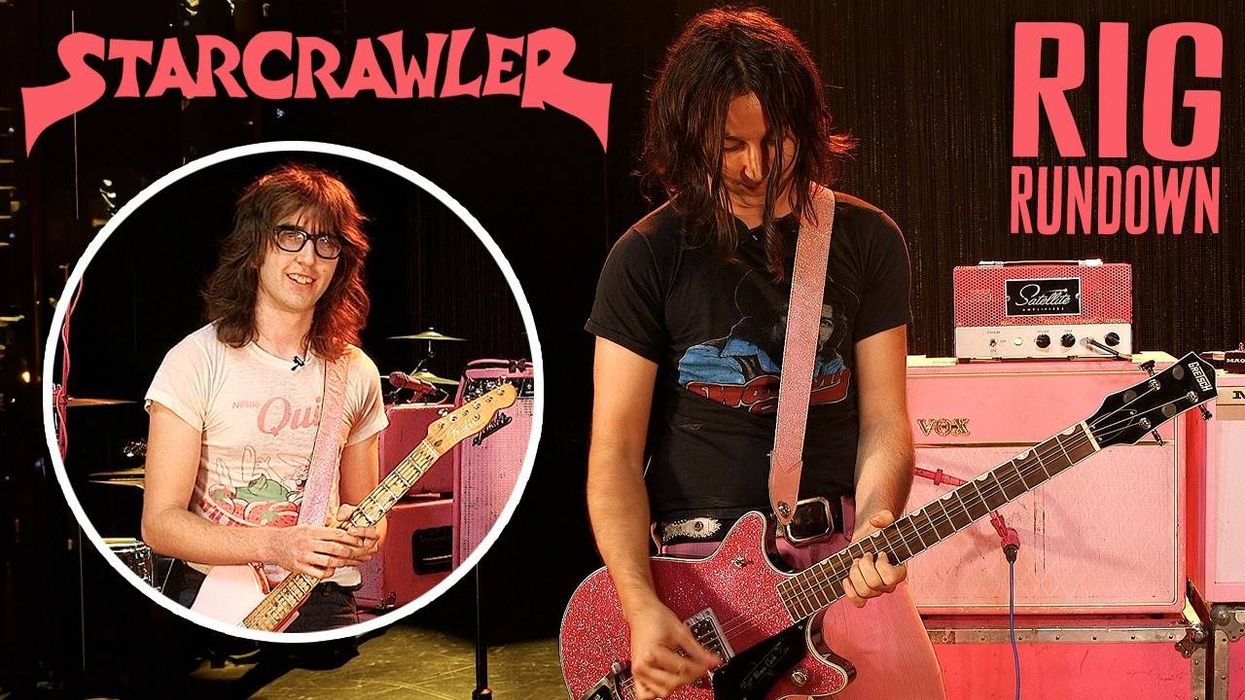
![Devon Eisenbarger [Katy Perry] Rig Rundown](https://www.premierguitar.com/media-library/youtube.jpg?id=61774583&width=1245&height=700&quality=70&coordinates=0%2C0%2C0%2C0)
